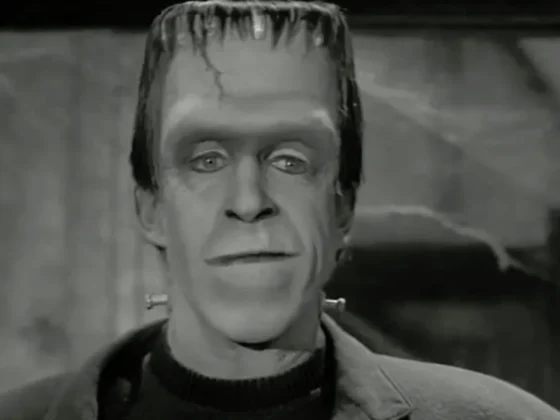The Chilling Lessons of Universe 25 – A Dystopian Experiment with Mice
In the late 1960s, an American researcher named John B. Calhoun embarked on a groundbreaking and deeply unsettling experiment that would come to be known as “Universe 25.” His goal? To create a rodent utopia – a perfect living environment for mice, free from predators, disease, or want. Yet what began as a controlled study into the dynamics of an isolated mouse population would ultimately unveil a dark and disturbing mirror into the potential future of our own human societies.
The Paradise of Mice
Calhoun’s “Universe 25” took shape inside a 9-foot square pen, meticulously designed to meet the needs of its tiny inhabitants. With unlimited food, water, bedding, and nesting areas, this rodent paradise offered every resource a mouse could desire. Even the temperature was carefully regulated to maintain an ideal environment.
Into this manufactured Eden, Calhoun introduced four pairs of healthy mice. At first, his rodent pioneers explored their new world with expected curiosity and soon began to breed – fulfilling nature’s prime directive. As the original population expanded, Calhoun’s team added a second level to the enclosure, effectively doubling the living space. With abundant territory and no natural predators, the mice’s numbers continued to swell.
The Rise of the Wretches
For a time, all seemed well within Universe 25’s walls. But as the colony approached 620 individuals, the first signs of trouble began to emerge. A rigid social hierarchy took hold, with the most aggressive males establishing dominance over the majority of the space and resources. These “alpha” mice zealously guarded their small territories, frequently attacking subordinate males who wandered too close.
In the wake of this brutality, a class of outsiders soon materialized – the so-called “wretches.” Beaten, battered, and marginalized, these low-ranking males found themselves forced into the fringes of the mouse metropolis. With no means to attract mates or claim their own space, many simply gave up, withdrawing into endless lethargy.
The Downward Spiral
As the wretches’ apathy spread like a contagion, the females of Universe 25 began exhibiting equally concerning behaviors. With male aggression on the rise and sexual activity in decline, many stopped breeding altogether. Those that did give birth often abandoned or outright attacked their own offspring, ensuring a future of population decline.
In a final twisted development, a new societal class emerged – the so-called “beautiful ones.” Effectively dropping out of the hierarchical power struggles, these males devoted themselves entirely to eating, drinking, sleeping and grooming. Refusing to fight or mate, they existed in a permanent state of undisturbed hedonism.
As juvenile mortality rates hit 100% and the last birth was recorded in 1973, it became clear that Calhoun’s rodent utopia had descended into a dystopian nightmare. Cannibalism, pansexual behavior, and violence were commonplace as the colony’s final days played out. Two years after the experiment’s inception, the last surviving mouse in Universe 25 was found dead.
The Chilling Parallels
While Calhoun’s methods were undoubtedly extreme, the lessons of Universe 25 continue to reverberate through the decades. Many have drawn striking parallels between the fates of the overcrowded mice and the potential futures facing human societies.
At its core, the experiment seemed to highlight the immense psychological toll of overcrowding and the breakdown of social constructs under such conditions. The emergence of the “beautiful ones” – creatures who had simply given up all purpose beyond base physical gratification – echoed worrying trends in parts of the modern human world.
Other observed behaviors like infant abandonment, sexual deviance, and a general unraveling of societal roles and norms have led some to wonder whether we might be headed down a similar path. As urban population densities continue to rise and resources grow strained, the specter of Universe 25 looms.
Of course, the experiment’s most chilling implication is the potential for runaway population growth to culminate in a civilization’s utter demise. While humans possess cognitive abilities far beyond those of mice, our sheer numbers and environmental impacts have already taken an undeniable toll on the planet’s ecosystems.
The Lessons for Sustainability
Calhoun himself was deeply troubled by the results of Universe 25, having begun the experiment with a much more optimistic vision. In his view, the descent into chaos and death stemmed from a fundamental lack of space – both physical and psychological.
“This second death,” he reflected grimly, “this ugly spiritual death, has already been experienced by members of the human species.”
For those seeking to build a sustainable future for humanity, the lessons of Universe 25 are hard to ignore. Unbridled growth, overpopulation, overcrowding, and environmental destruction are all paths that could ultimately lead modern societies down the same desolate road as Calhoun’s ill-fated mouse utopia.
Potential Solutions
So how can we apply the teachings of Universe 25 to build a better future? For some, the answer lies in a concerted global effort to rein in human population growth through increased education, empowerment of women, and family planning initiatives.
Others point to the need to dramatically reduce per-capita consumption of resources through sustainable technologies, renewable energy, recycling efforts and a transition away from wasteful disposable goods. Still others call for a reassessment of our crowded urban living environments, with an emphasis on creating greater connections with nature.
Ultimately, the path forward requires a holistic approach that addresses all aspects of the “Universe 25” phenomenon – from population management to psychological wellbeing and environmental rejuvenation. Potential solutions exist, but they require a seismic philosophical and behavioral shift for our species.
A Stark Warning
Whether you view Calhoun’s experiment as a literal forecast or merely a cautionary metaphor, the death of Universe 25 stands as a stark warning against the perils of unbridled growth, consumption, and environmental disregard. The mice of that ill-fated habitat may have been guided by instinct alone, but their legacy serves as a powerful reminder that even the most idealized environments have limits.
For humanity, the choice is ours. We can continue marching heedlessly down the path of explosion, or we can learn from the mistakes of the past – taking the teachings of Universe 25 to heart as we forge a more sustainable trajectory.
The decision we make today will echo through countless generations to come.











